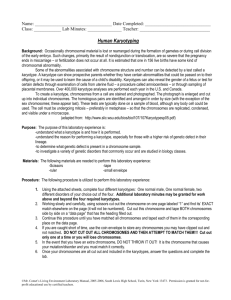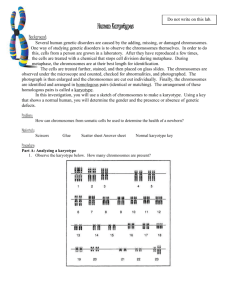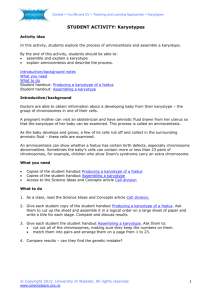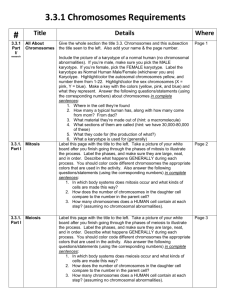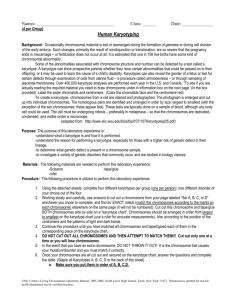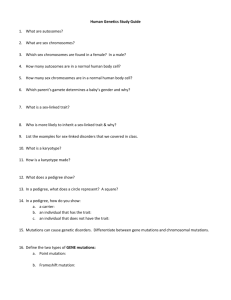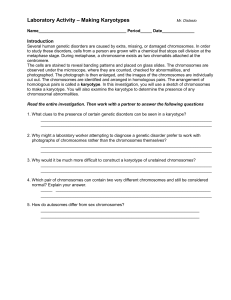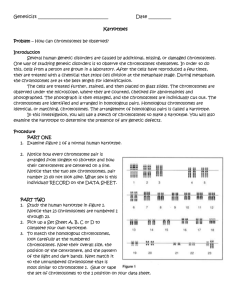Karyotype Analysis
advertisement
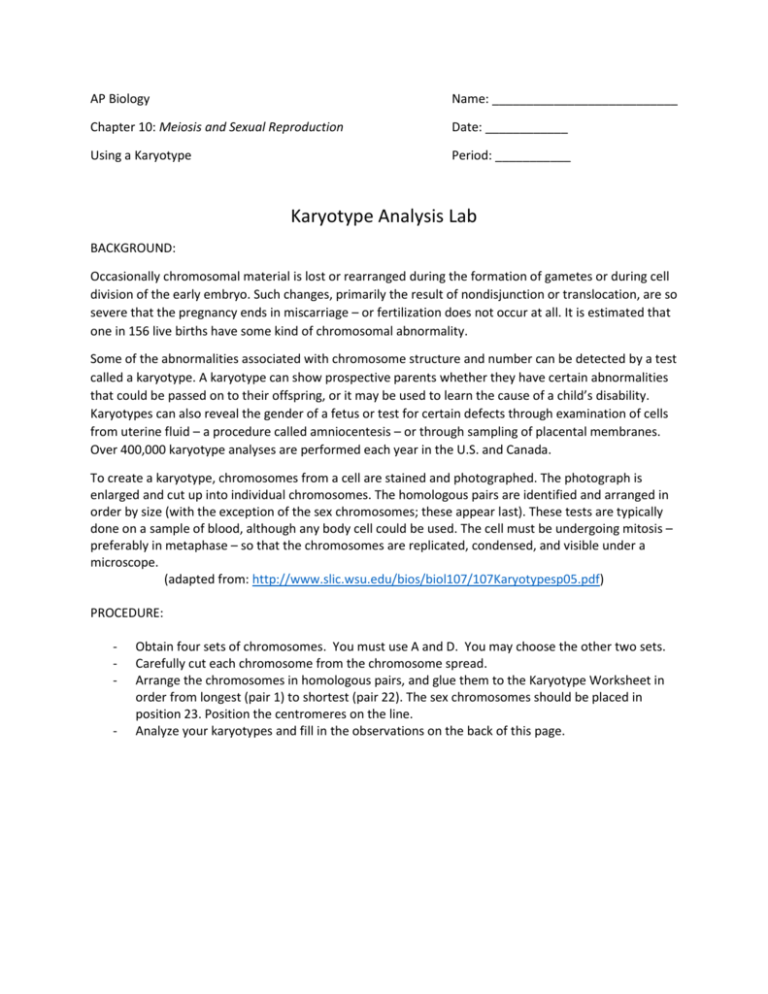
AP Biology Name: ___________________________ Chapter 10: Meiosis and Sexual Reproduction Date: ____________ Using a Karyotype Period: ___________ Karyotype Analysis Lab BACKGROUND: Occasionally chromosomal material is lost or rearranged during the formation of gametes or during cell division of the early embryo. Such changes, primarily the result of nondisjunction or translocation, are so severe that the pregnancy ends in miscarriage – or fertilization does not occur at all. It is estimated that one in 156 live births have some kind of chromosomal abnormality. Some of the abnormalities associated with chromosome structure and number can be detected by a test called a karyotype. A karyotype can show prospective parents whether they have certain abnormalities that could be passed on to their offspring, or it may be used to learn the cause of a child’s disability. Karyotypes can also reveal the gender of a fetus or test for certain defects through examination of cells from uterine fluid – a procedure called amniocentesis – or through sampling of placental membranes. Over 400,000 karyotype analyses are performed each year in the U.S. and Canada. To create a karyotype, chromosomes from a cell are stained and photographed. The photograph is enlarged and cut up into individual chromosomes. The homologous pairs are identified and arranged in order by size (with the exception of the sex chromosomes; these appear last). These tests are typically done on a sample of blood, although any body cell could be used. The cell must be undergoing mitosis – preferably in metaphase – so that the chromosomes are replicated, condensed, and visible under a microscope. (adapted from: http://www.slic.wsu.edu/bios/biol107/107Karyotypesp05.pdf) PROCEDURE: - - Obtain four sets of chromosomes. You must use A and D. You may choose the other two sets. Carefully cut each chromosome from the chromosome spread. Arrange the chromosomes in homologous pairs, and glue them to the Karyotype Worksheet in order from longest (pair 1) to shortest (pair 22). The sex chromosomes should be placed in position 23. Position the centromeres on the line. Analyze your karyotypes and fill in the observations on the back of this page. OBSERVATIONS: Karyotype A Karyotype D Individual is a ____________________ Individual is a ____________________ Number of chromosomes: _______ Number of chromosomes: _______ What is the sex? ________________ What is the sex? ________________ Normal or Mutated (circle one) Normal or Mutated (circle one) If mutated, name the disorder below If mutated, name the disorder below Karyotype ____ Karyotype ___ Individual is a ____________________ Individual is a ____________________ Number of chromosomes: _______ Number of chromosomes: _______ What is the sex? ________________ What is the sex? ________________ Normal or Mutated (circle one) Normal or Mutated (circle one) If mutated, name the disorder below If mutated, name the disorder below CONCLUSIONS: 1. Why are karyotypes useful tools for geneticists? 2. If you were responsible for informing parents about the results of a karyotype of their fetus, how would you explain what you have observed in each of your karyotypes and what it means for their offspring?


